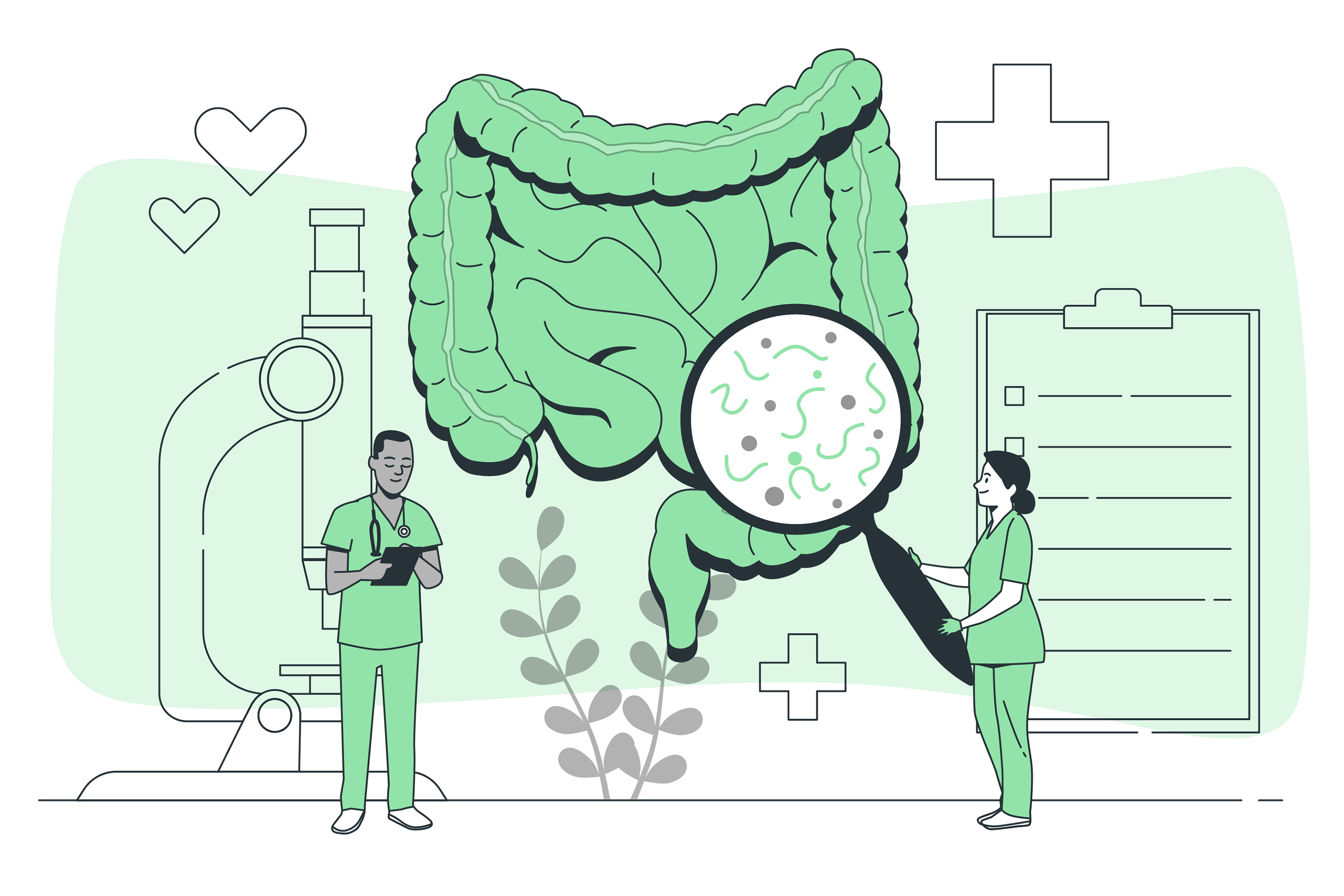

Gastroenterology procedures are an essential part of diagnosing and treating various gastrointestinal conditions. However, for many individuals, the world of gastroenterology can seem complex and unfamiliar. In this comprehensive guide, we aim to demystify common gastroenterology procedures, providing you with a clear understanding of their purpose, process, and benefits. Whether you're seeking medical advice or simply curious about these procedures, you will gain valuable insights into gastroenterology from this article.
Purpose of Gastrointestinal Diagnostics & Procedures: Advancing Digestive Health
Gastrointestinal diagnostics and procedures play a vital role in the field of gastroenterology, enabling healthcare professionals to diagnose, treat, and manage a wide range of digestive disorders. These procedures serve multiple purposes, including identifying the root causes of gastrointestinal symptoms, detecting abnormalities, monitoring disease progression, and guiding appropriate treatment plans. Let’s check out the key purposes of gastrointestinal diagnostics and procedures, shedding light on their importance in advancing digestive health and improving patients' quality of life.
1. Diagnosis of Gastrointestinal Conditions:
One of the primary purposes of gastrointestinal diagnostics and procedures is to facilitate accurate diagnoses. Gastroenterologists utilize these procedures to investigate symptoms such as abdominal pain, digestive disturbances, rectal bleeding, unexplained weight loss, and changes in bowel habits. By performing diagnostic tests, such as endoscopies, imaging scans, and laboratory analyses, healthcare professionals can identify various gastrointestinal conditions, including gastroesophageal reflux disease (GERD), peptic ulcers, inflammatory bowel disease (IBD), celiac disease, gastrointestinal cancers, and more. Accurate diagnoses are crucial for initiating appropriate treatment plans and managing the conditions effectively.
2. Screening for Gastrointestinal Cancers:
Gastrointestinal cancers, including colorectal, esophageal, gastric, pancreatic, and liver cancers, are significant health concerns worldwide. Gastrointestinal diagnostics and procedures, such as colonoscopies and upper endoscopies, play a pivotal role in cancer screening and early detection. Regular screenings allow healthcare professionals to identify precancerous conditions, such as polyps, and detect cancer at its earliest stages, when treatment outcomes are generally more favorable. Through screening programs and procedures, the aim is to reduce cancer mortality rates and improve overall patient outcomes.
3. Evaluation of Gastrointestinal Bleeding:
Gastrointestinal bleeding can arise from various sources within the digestive tract, ranging from ulcers and hemorrhoids to vascular abnormalities and tumors. Diagnostic procedures, including upper endoscopies, colonoscopies, and capsule endoscopies, help identify the source and severity of gastrointestinal bleeding. These evaluations aid in determining the appropriate treatment approach, which may involve cauterization, endoscopic interventions, medication, or surgery, depending on the underlying cause and extent of bleeding. Timely identification and management of gastrointestinal bleeding are critical to preventing complications and ensuring patient well-being.
4. Monitoring and Management of Chronic Gastrointestinal Conditions:
For individuals with chronic gastrointestinal conditions, such as Crohn's disease, ulcerative colitis, and liver disease, regular diagnostic procedures are essential for monitoring disease activity and guiding treatment decisions. Procedures like colonoscopies, sigmoidoscopies, imaging scans, and laboratory tests allow healthcare professionals to assess inflammation, disease progression, and response to therapies.Through ongoing monitoring, adjustments to treatment plans can be made to optimize disease control, reduce symptoms, and prevent long-term complications.
5. Therapeutic Interventions and Treatment:
Gastrointestinal diagnostics not only aid in diagnosis and monitoring but also enable therapeutic interventions for certain conditions. In addition to endoscopic retrograde cholangiopancreatography (ERCP) and endoscopic mucosal resection (EMR), gastroenterologists can remove gallstones, extract polyps, treat biliary obstructions, perform biopsies, and treat gastroenterological complications. These interventions often provide minimally invasive alternatives to surgery, resulting in faster recovery times, reduced risks, and improved patient comfort.

Most Common Types of Gastroenterology Procedures
Gastroenterology procedures encompass a wide range of diagnostic and therapeutic techniques used to assess and treat conditions affecting the gastrointestinal tract. A gastroenterologist, or specialists trained in managing digestive disorders. Some of the most common types of gastroenterology procedures are:
1. Upper Endoscopy (EGD):
Upper endoscopy, also known as esophagogastroduodenoscopy (EGD), is a procedure that allows a gastroenterologist to examine the upper gastrointestinal tract. A flexible tube with a camera (endoscope) is inserted through the mouth, down the throat, and into the esophagus, stomach, and the first part of the small intestine. EGD helps diagnose conditions such as acid reflux, ulcers, gastritis, and even early signs of cancer. It can also be used for therapeutic interventions, such as removing polyps or taking biopsies.
2. Colonoscopy:
Colonoscopy is a procedure that examines the large intestine (colon) and rectum. A long, flexible tube with a camera (colonoscope) is inserted through the rectum to visualize the entire colon. Colonoscopy is primarily used for screening and detecting colorectal cancer, as well as diagnosing conditions like inflammatory bowel disease (IBD), diverticulosis, and polyps. During the procedure, polyps can be removed, and tissue samples (biopsies) can be taken for further analysis.
3. Endoscopic Retrograde Cholangiopancreatography (ERCP):
Endoscopic retrograde cholangiopancreatography (ERCP) is a specialized procedure that combines endoscopy and fluoroscopy to diagnose and treat conditions of the liver, gallbladder, bile ducts, and pancreas. It involves the insertion of an endoscope through the mouth and into the duodenum, followed by the injection of contrast dye to visualize these structures on X-ray. ERCP is used to identify and remove gallstones, clear blocked bile ducts, and manage conditions such as pancreatitis and bile duct tumors.
4. Capsule Endoscopy:
Capsule endoscopy is a non-invasive procedure that involves swallowing a small, pill-sized capsule equipped with a camera. As the capsule passes through the digestive system, it captures images of the small intestine, which are transmitted to the patient's device. Often, capsule endoscopy is used for diagnosing and monitoring conditions like Crohn's disease, small intestine tumors, and gastrointestinal bleeding that cannot be detected other ways.
5. Flexible Sigmoidoscopy:
Flexible sigmoidoscopy is a procedure that examines the lower part of the colon, specifically the rectum and sigmoid colon. A flexible tube with a camera (sigmoidoscope) is inserted through the rectum to visualize the colon's lining. This procedure is helpful in identifying conditions such as colorectal polyps, inflammation, and early signs of cancer. It is often used as a screening tool, especially when a full colonoscopy is not required.

Conclusion:
Understanding common gastroenterology procedures is crucial for individuals seeking medical care for gastrointestinal issues or those curious about their purpose and benefits. The procedures mentioned above - upper endoscopy (EGD), colonoscopy, endoscopic retrograde cholangiopancreatography (ERCP), capsule endoscopy, and flexible sigmoidoscopy - are integral in diagnosing and treating various gastrointestinal conditions. Healix Hospitals in Madinaguda, Hyderabad, is a renowned healthcare institution dedicated to providing comprehensive medical services and compassionate care to patients. With a strong commitment to excellence, state-of-the-art facilities, and a team of highly skilled healthcare professionals, Healix Hospitals has earned a reputation as a trusted healthcare provider in the region. Healix Hospitals strives to deliver healthcare excellence to individuals in Madinaguda and surrounding areas. With its commitment to providing compassionate care and achieving optimal patient outcomes, Healix Hospitals continues to be a trusted destination for healthcare services.
Disclaimer: The information provided in this blog is for educational and informational purposes only. It is not a substitute for professional medical advice, diagnosis, or treatment. Always seek the advice of your physician or qualified healthcare provider with any questions you may have regarding a medical condition.
Also Read: Gallstones: Overview And Prevention-Healix Hospitals